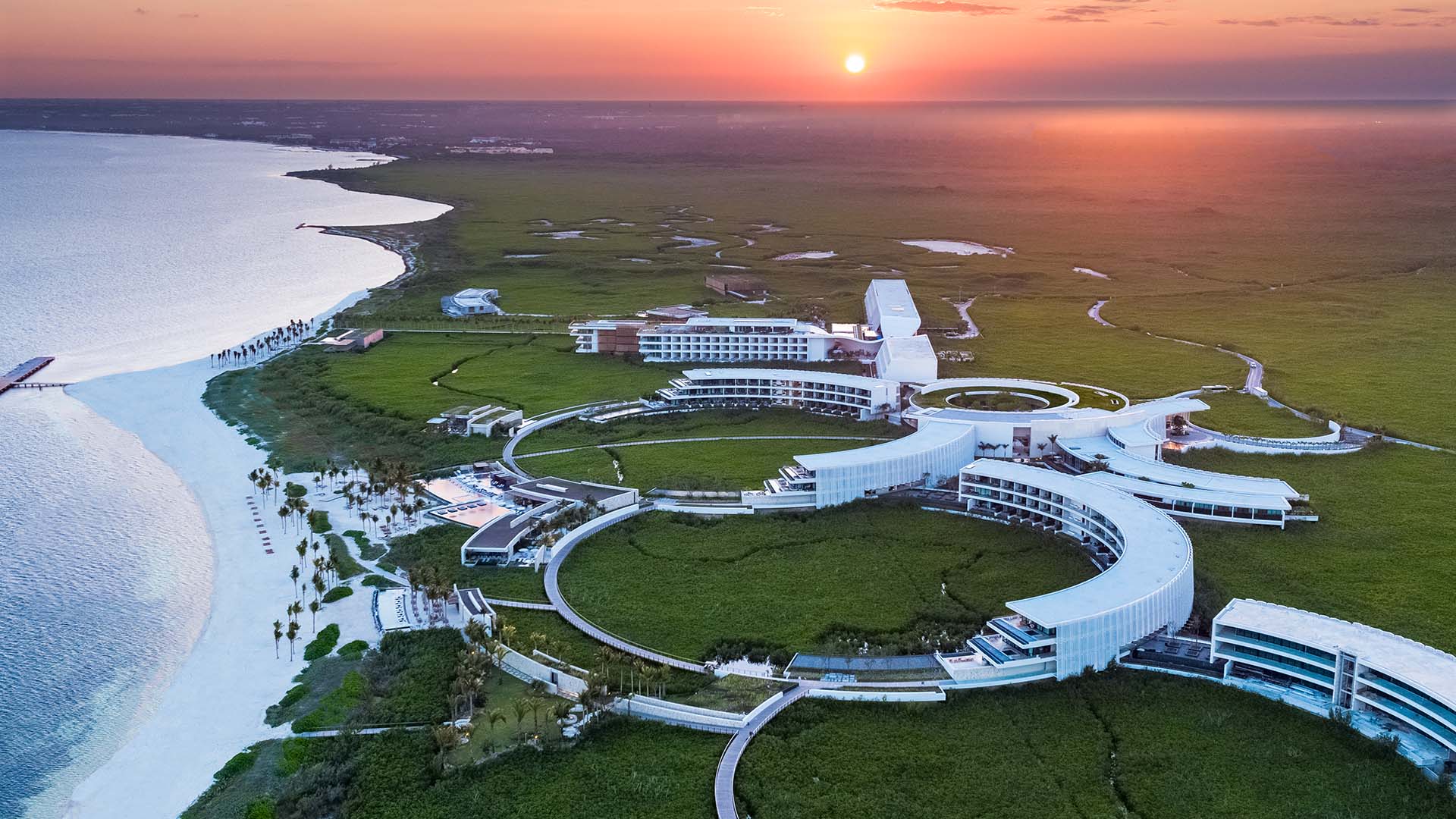The Riviera Maya, a coastal paradise on the Yucatan peninsula of Mexico, is home to peaceful mangroves, stunning beaches, and breathtaking freshwater pools known as cenotes. And nestled amongst the mangrove trees is The St. Regis Kanai Resort, Riviera Maya — a 620-acre reserve that immerses travelers in a heavenly natural setting and pays homage to over 4,000 years of Maya heritage within greater Mexico.
In this episode of Travel by Design, host Hamish Kilburn chats with designer Tatiana Sheveleva, who spent seven years painstakingly sculpting a seamless indoor-outdoor experience at The St. Regis Kanai Resort, Riviera Maya.
Fascinated by Maya culture and especially the Mayas’ mastery of astronomy and architecture, Tatiana worked with architect Michael Edmonds to build out a cluster of white circular buildings.
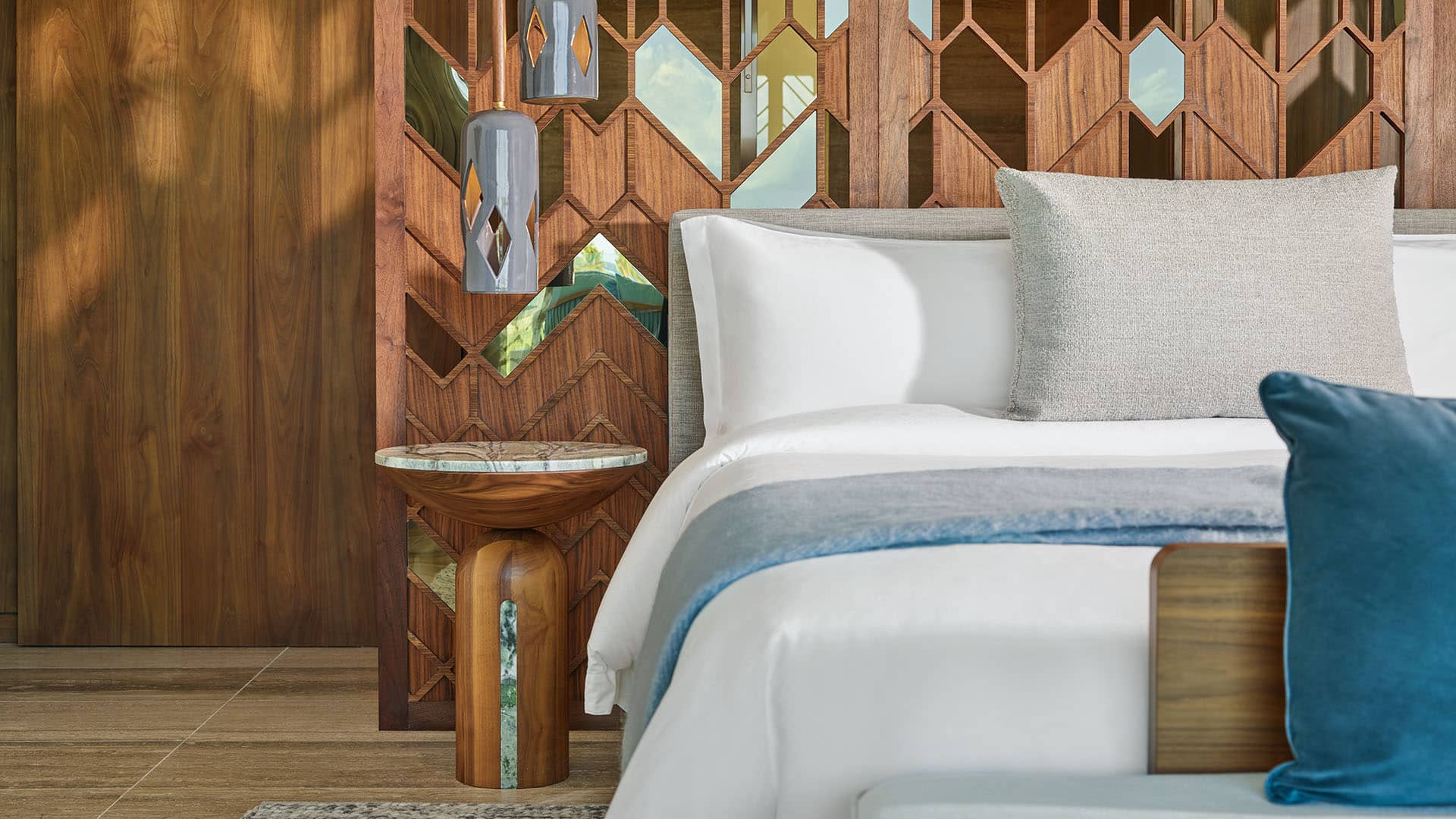
These elegant structures not only offer magnificent views of the beach, they also reflect the stars of the “Seven Sisters,” honor the Mayan lunar calendar, and recognize that in the Yucatan this place is called Kanai — which translates to “Where the sky is born.”
In their conversation, Tatiana shares how she and Edmonds incorporated starlight (including sunlight) into the hotel interior design and architecture. Then she recounts what it was like to descend into the crystal-clear waters of an underground cenote for the first time, and explains how this spiritual experience inspired her guest room designs.
Finally, Tatiana and Hamish connect over the importance of designing to create once-in-a-lifetime memories for travelers, and Tatiana shares an unforgettable moment from her first trip to the newly opened hotel.
- 00:50 – What is the Riviera Maya, and what do travelers love about it?
- 02:17 – When building a coastal resort in a mangrove reserve, why center the design of this resort on a starry night sky?
- 08:24 – What is it like to descend into the serene waters of an underground cenote?
- 14:19 – How does the importance of comfort shine through in this design process?
Featured Hotel: The St. Regis Kanai Resort, Riviera Maya
Featured Designer: Tatiana Sheveleva, Chapi Chapo Design
Explore more stories about hotel design at Travel by Design
Follow host Hamish Kilburn’s hotel design reviews @HotelDesigns and global travels @hotel_travel_editor
TRANSCRIPT
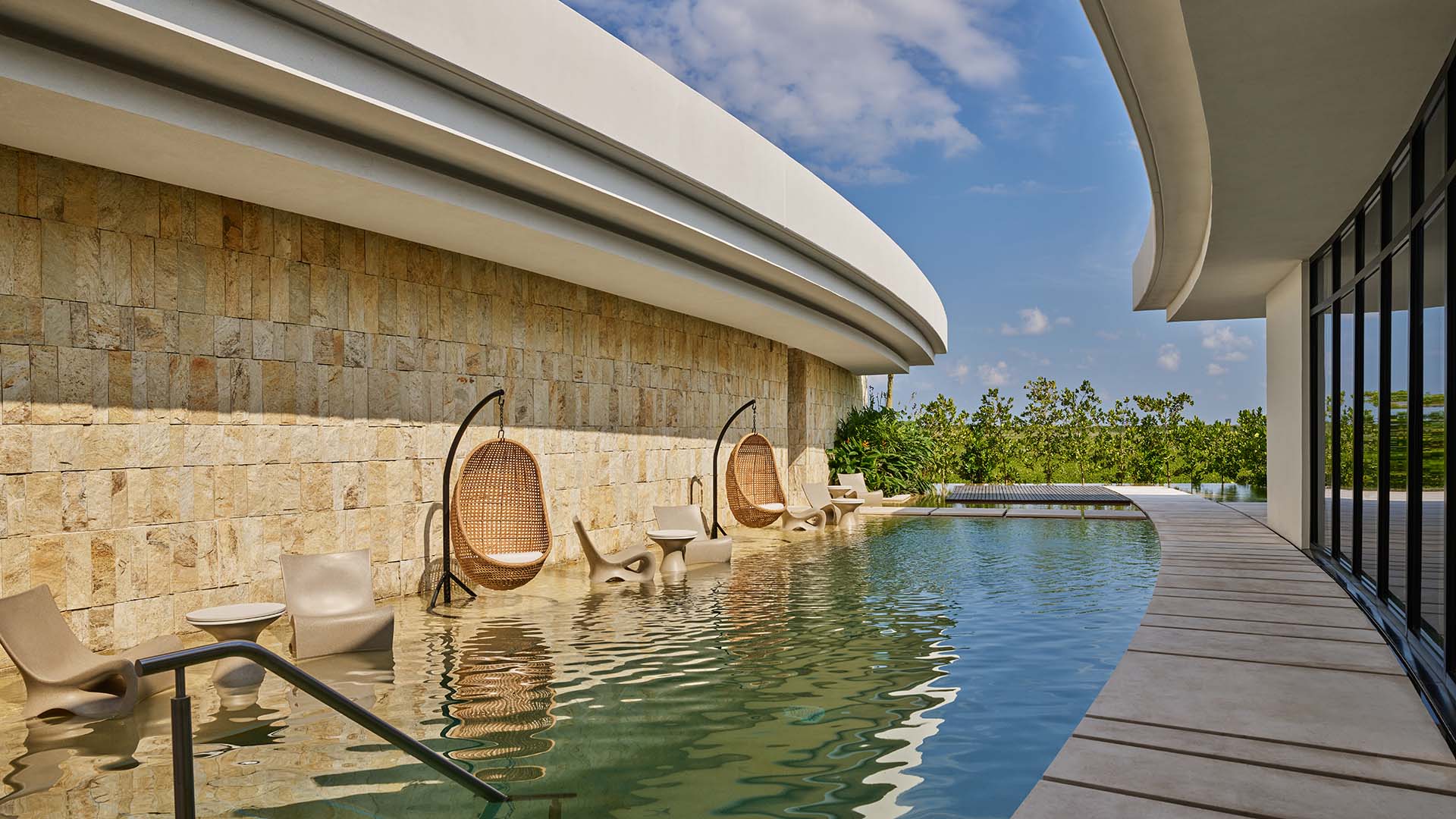
Tatiana Sheveleva: We wanted to create this hotel so you would never disconnect from environment.
And you enjoy the sound of water, you enjoy the sound of birds and sound of ocean.
Because I never design something beautiful. I always design… memories.
I really believe that through my design, people will build the memories there.
‘Cause nobody in the end possibly will remember the chair, how the chair will look like, but they will always will remember when they were sitting on this chair with their daughter, with their husband, and looking in a sunset.
That’s what they remember. That’s why I’m doing this job.
HAMISH VO: This is Travel by Design — where we chat with the visionaries behind the world’s most extraordinary hotels.
I’m your host, Hamish Kilburn, professional hotel reviewer and the editor of Hotel Designs.
Today, our destination is the Riviera Maya. It’s a picturesque stretch of mangrove forests and beaches along the Yucatan peninsula, in southeastern Mexico.
But beyond the surface of this already stunning environment, there are two travel experiences which you can’t find anywhere else.
One of these experiences is swimming in cenotes, freshwater pools — often found in underground caverns.
The second experience linked to this part of the Yucatan is a stunning view of the starry night sky.
The Maya people — who have a rich culture and long history within greater Mexico — mastered astronomy in the first thousand years of the Common Era. They built sundials, and other architectural features, to track the movement of the stars.
And this inspired my guest for today: Tatiana Sheveleva.
Tatiana Sheveleva: I’m from Kazakhstan and a partner and owner of Chapi Chapo Design.
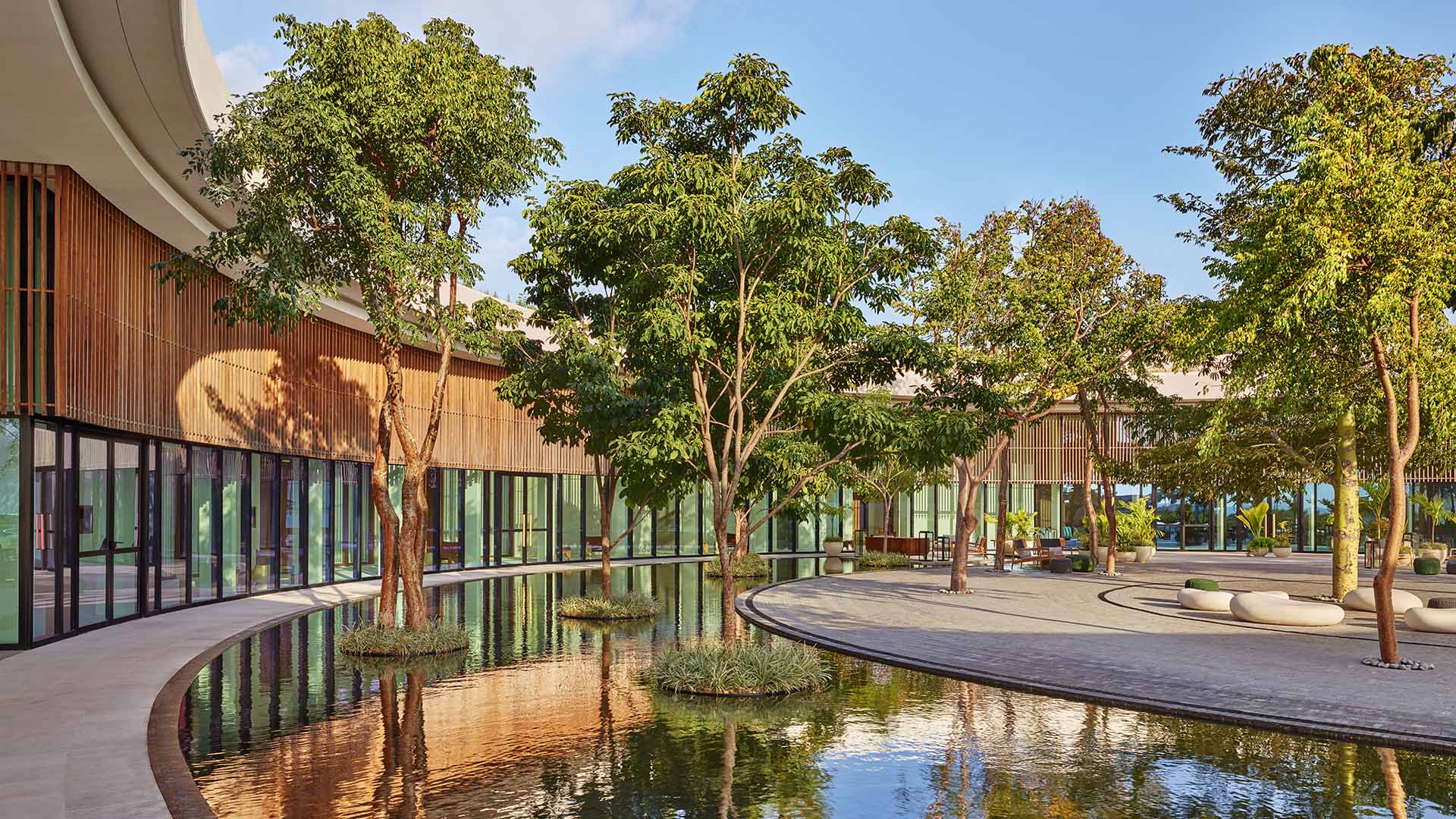
HAMISH VO: Tatiana designed the St. Regis Kanai Resort, Riviera Maya, to be a seamless indoor-and-outdoor experience, which immerses travelers in the lush natural settings of mangroves, beaches, and cenotes.
But most of all, Tatiana looked to the sky. I started our conversation by asking how starlight showed up in the resort experience.
Hamish Kilburn: You’ve designed a resort in one of the most incredible places in the world.
Tatiana Sheveleva: Yes.
Hamish Kilburn: The St. Regis Kanai is basically settled in, in just breathtaking landscape.
Its, its immediate sort of surroundings are mangrove trees, and it’s just simply breathtaking on its own.
But you looked at the sky and especially you looked at the stars.
So I’m just kind of wanting to know first and foremost, when did that realization hit you, that that should be the design narrative?
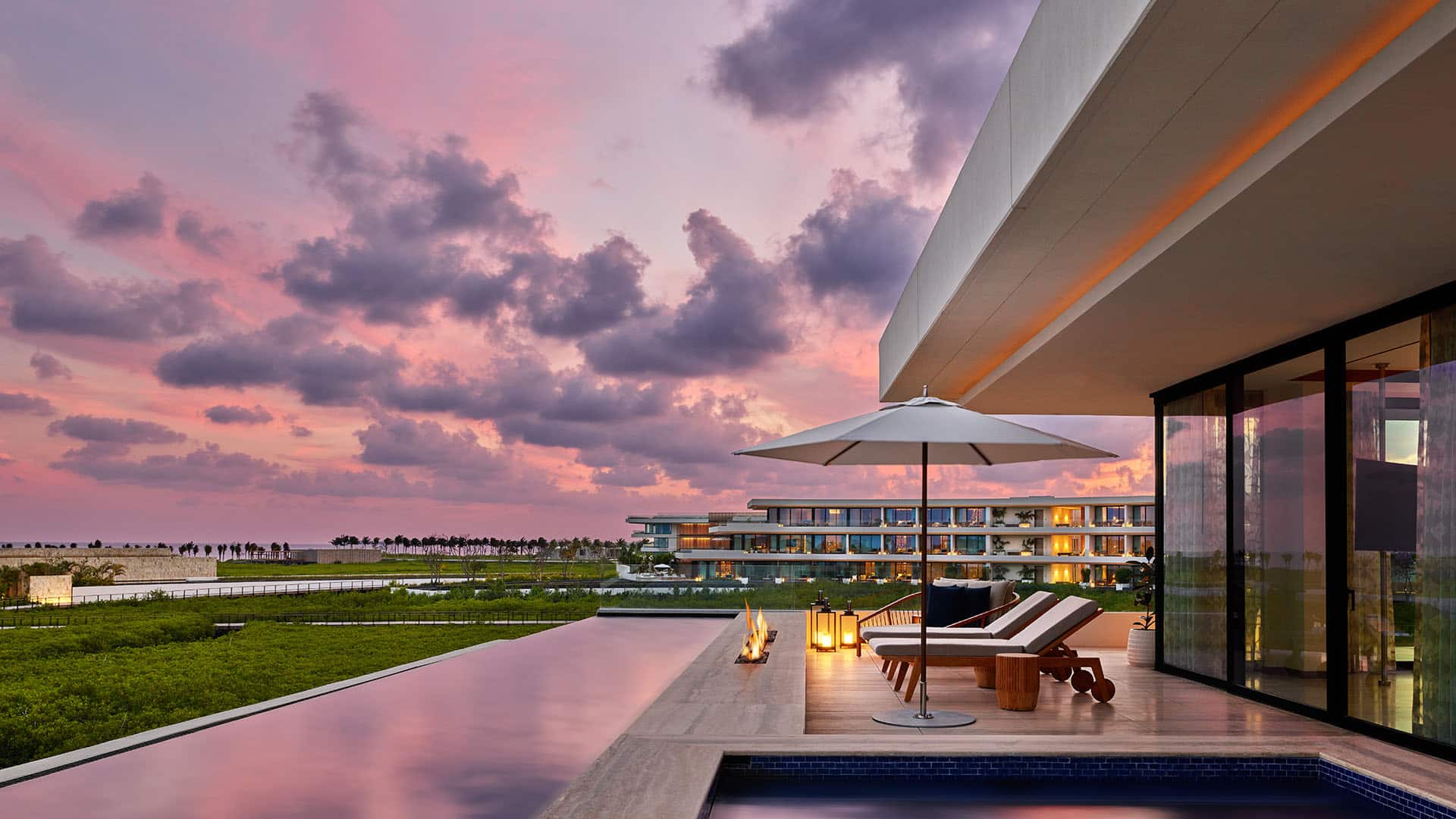
Tatiana Sheveleva: So on the project, if you know, there is a fabulous architect; his name is Michael Edmonds, and he’s a very spiritual person.
The way he started this project and I’m kind of quoting his words, he came to the land and in the quiet evening, he sat down beside the sea, and he started to kind of meditate, I would say.
And it was a beautiful evening — for some reason, I don’t know why, the sunset in St. Regis Kanai, it’s absolutely spectacular. Like beautiful, burgundy, pink color.
So he was watching a sunset, this what he was telling me, and uh, the stars start to appears in the sky, and it’s a perfect, beautiful black sky, with very bright stars.
And in this particular location, “Kanai” — the translation of that, it’s, “Where the sky is born.”
Hamish Kilburn: Wow.
Tatiana Sheveleva: Kanai means “Where the sky is born.” And this is a gate to the Heaven.
So what he decided, “Oh my God, this is obvious. I’m looking at the stars. How about if I create these circles that imitate these bright stars?”
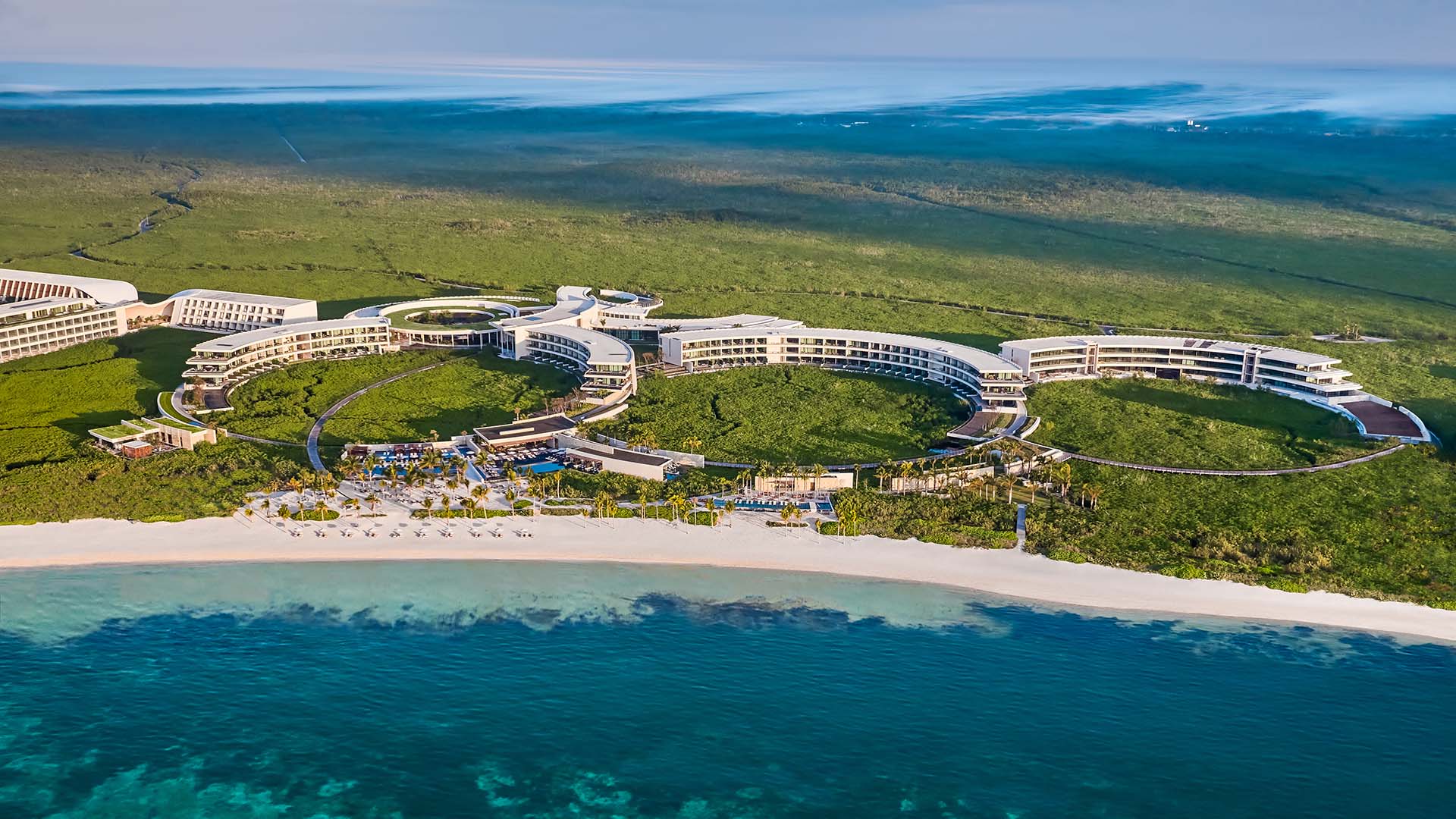
Hamish Kilburn: I really love that. I really love that, that description.
And I want to talk about the architecture now, because I was looking at an aerial photograph of the resort. One of the major things you notice really is the circular shapes of the buildings. They’re… they’re like nothing I’ve ever seen before.
Um… Each one is like a, a bright, white ring embedded with the mangrove forest; some of them connect to each other to create this sort of striking of curves, even.
Tatiana Sheveleva: And it’s a true constellation from the sky to the ground.
Hamish Kilburn: Wow…
Tatiana Sheveleva: Because it is, like, the stars floating above the land.
So if you look at the architecture, It’s a seven circles, and I think this is so beautiful. This is absolutely beautiful. Yeah.
Hamish Kilburn: And correct me if I’m wrong, Tatiana, but you were actually chosen by the architect based on your mutual enthusiasm for Mayan astronomy.
Tatiana Sheveleva: Absolutely. I think we meant to meet with each other, to be honest. I don’t know, it was written in the stars somewhere.
I arrived to New York City, and prior to this meeting, they didn’t show me architecture. They just showed me the land, and they asked me to come up with a narrative.
And obviously I did the research, and I come up with a story about this Mayan culture, who created this lunar calendar, and they’re masters in, even in architecture.
So I built my narrative based on that.
So when I arrived and I started to present, I could see the architect eyes was started to, to, (laughs) to get sparkle, I guess. (laughs)
I didn’t know why he was looking at me, but after that, he take my hands and he told, “Tatiana, you exactly told me what I had in mind.”
And I guess that, that sealed the deal. That totally sealed the deal. Yeah. (Laughs)
Hamish Kilburn: It’s like the aha moment on any project, isn’t it?
Tatiana Sheveleva: Yes, yes.
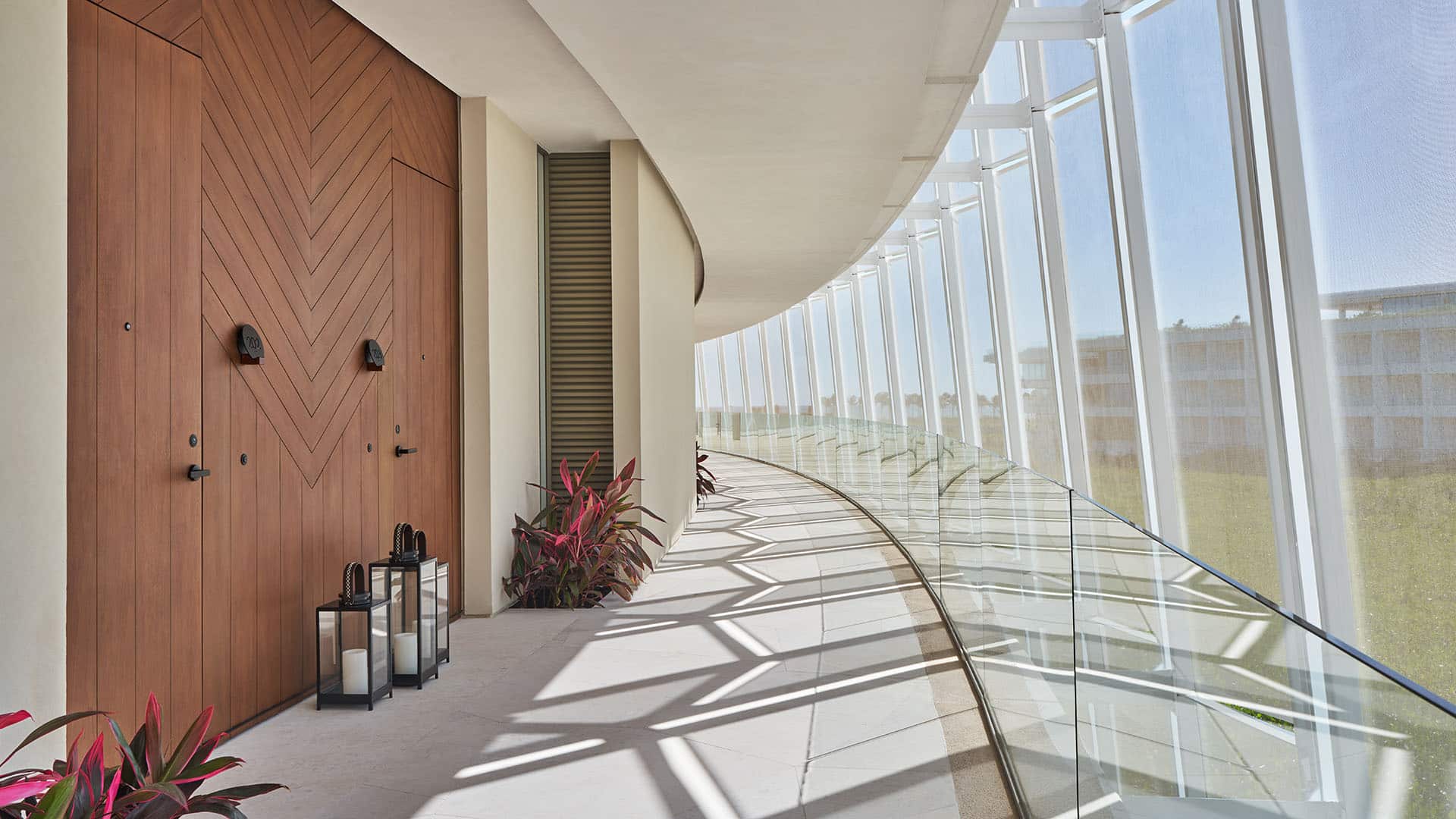
Hamish Kilburn: And, and for me, I kind of want to focus now on the interiors of the hotel, because…
I want to ask you about natural light, which is a problem that most designers have when they’re creating a hotel.
And I guess the most obvious natural light that I can think of is, is our own star, the Sun. You used that light to create really captivating shadows.
So for instance, in the guest corridors at the right time of day, the floor lights up with a pattern that almost looks like stretched herringbone, which is made up of different layers of sunlight and, and shadows.
For me that’s, that’s so simple, yet so effective, ’cause it almost feels like the lighting and the interior, it becomes art in itself.
Tatiana Sheveleva: My God, Hamish, I’m so glad you mentioned that. And, uh, that’s exactly what we were trying to do in the hotel.
For example, when you go to the spa, we have this wood screen that we created and the pattern of the screen, we got inspired from Mayans’ textiles.
And this has this almost diamond shape —
Hamish Kilburn: Oooh, I see…
Tatiana Sheveleva: — that we tried to implement.
So architect, instead of just simple walls, in the corridors, he created this metal structure. And the metal structure has this herringbone shape, which is also reflect of the Mayan textiles.
And he stretched this, which was absolutely brilliant, he stretched this fabric on this metal structure.
So when it’s during the day, when the sun is hit exactly 2:30 afternoon, it creates a beautiful shadow on the corridor, on the floor.
It is exactly the same pattern that I have inside of the room of my headboard behind the bed.
Which is absolutely… I don’t know, how does it happen?
Hamish Kilburn: I think that’s so beautiful, because most people would walk past it and think, “Wow that’s really beautiful,” but actually for it to have such a layer to it…
Tatiana Sheveleva: Yes. It create this additional decorative element, sculptural element in the hotel.
It start from 2:30 afternoon.
It’s happened in a corridor.
At 5:00, it’s happened in the lobby.
And later on at 5:30, it’s happened in a corridor which is lead you to the spa.
Hamish Kilburn: And completely by nature.
Tatiana Sheveleva: By nature,
Hamish Kilburn: Completely unique to that location.
Tatiana Sheveleva: Yeah. So it’s, it’s absolutely magical. Magical, magical. Yeah.
Hamish Kilburn: So, so the hotel is full of amazing moments, but outside of the hotel, in the Yucatan… there’s this just unparalleled experience that every traveler needs to, to put themselves in, and immerse themselves in. And that’s the cenotes.
Tatiana Sheveleva: Oh my God. The cenote for me, I felt like I died and went to heaven.
Hamish Kilburn: So for travelers you can think of these as kind of, like, underground caves almost, made of limestone, which often have beautiful crystal clear pools of water.
Tatiana Sheveleva: It’s like a ground got shifted. The land got shifted, and it created this beautiful underground lake, which is a pure clear water.
So there is a lot of turtles, uh, birds living there, a lot of different fishes.
So when you want to visit there, they encourage you to take a shower. So you have to come, like, very clean there, so you will not disturb the animals who live there.
When you’re there, you feel…
I don’t know, you feel so small and you finally understand what is important, what is not important, it’s truly a spiritual experience.
Hamish Kilburn: So talk us through the, the whole process as you’re walking down and what your senses are capturing.
AMBI — Birds in a cenote
Tatiana Sheveleva: There is no sound hearing, except the bird sounds, nature sounds…
Uh, You see this… this pure round shape, and it’s crystal clear water.
You think that it’s very shallow, but it’s actually very deep.
Because it’s crystal clear, you see the bottom of that, but it’s very, very deep.
AMBI — Soft splash of a swimmer submerging into water
And from humidity to this, it’s like a cold, cold water… uh, Hamish, it’s, it’s hard for me to explain, but…
It’s a shock for your body, because it’s so cold, but it’s also… a shock for your mind, because you forget about everything.
SFX — Soft swell of ambient tone that echoes into silence
You forget forget about your busy life, and you truly understand you’re a human being.
That was for me, one of the aha moments, like, Oh my God I don’t know what I’ve done in life, Hamish, but I think I’d done something right…
I truly feel like it’s, it’s a heaven on earth. I’m telling you.
Hamish Kilburn: It sounds like a really personal moment, and what I’m interested is, is how you then translated the shapes and the essence of, of that feeling and how you captured that into the design of St. Regis Kanai.
Tatiana Sheveleva: Yes. So when you come to the room, uh, you see this beautiful bathroom, which is completely open, so you feel like your bathroom became part of your bedroom.
And the cenote was one of the inspirational moments for me.
So I decided to create a sculptural sink, architectural sculptural sink, that is standing in the middle of the room.
It’s a pure shape of this lake, cenote. And the stone has to capture all of these colors, which is a little bit of brown or sea colors, a little bit of green, a little bit of blue, green as a vegetation, a little bit of blue as a actual water.
And it’s create this beautiful pattern.
Hamish Kilburn: Sounds timeless.
Tatiana Sheveleva: Yes, and it is. And after that I created these mirrors, which is hanging above of that.
And the mirrors has one side is a clear mirror, and another side is a bronze mirror.
So when you look at the mirror, it’s a pure reflection of the sink, which is represent cenote, lake of cenote.
So when I’m standing and brushing my teeth, I’m not looking only at the mirror, seeing myself, seeing my partner, my friend.
You also see the pure reflection of the sink, which is so beautiful.
And the way it’s hanging from the ceiling, it’s also represent this vegetation, which is hanging from the land, and it’s hanging above the lake of cenote.
Hamish Kilburn: I love how many layers there are in this story. And actually, all the layers kind of… excuse the pun, but they reflect each other, because they really do.
Tatiana Sheveleva: Yes.
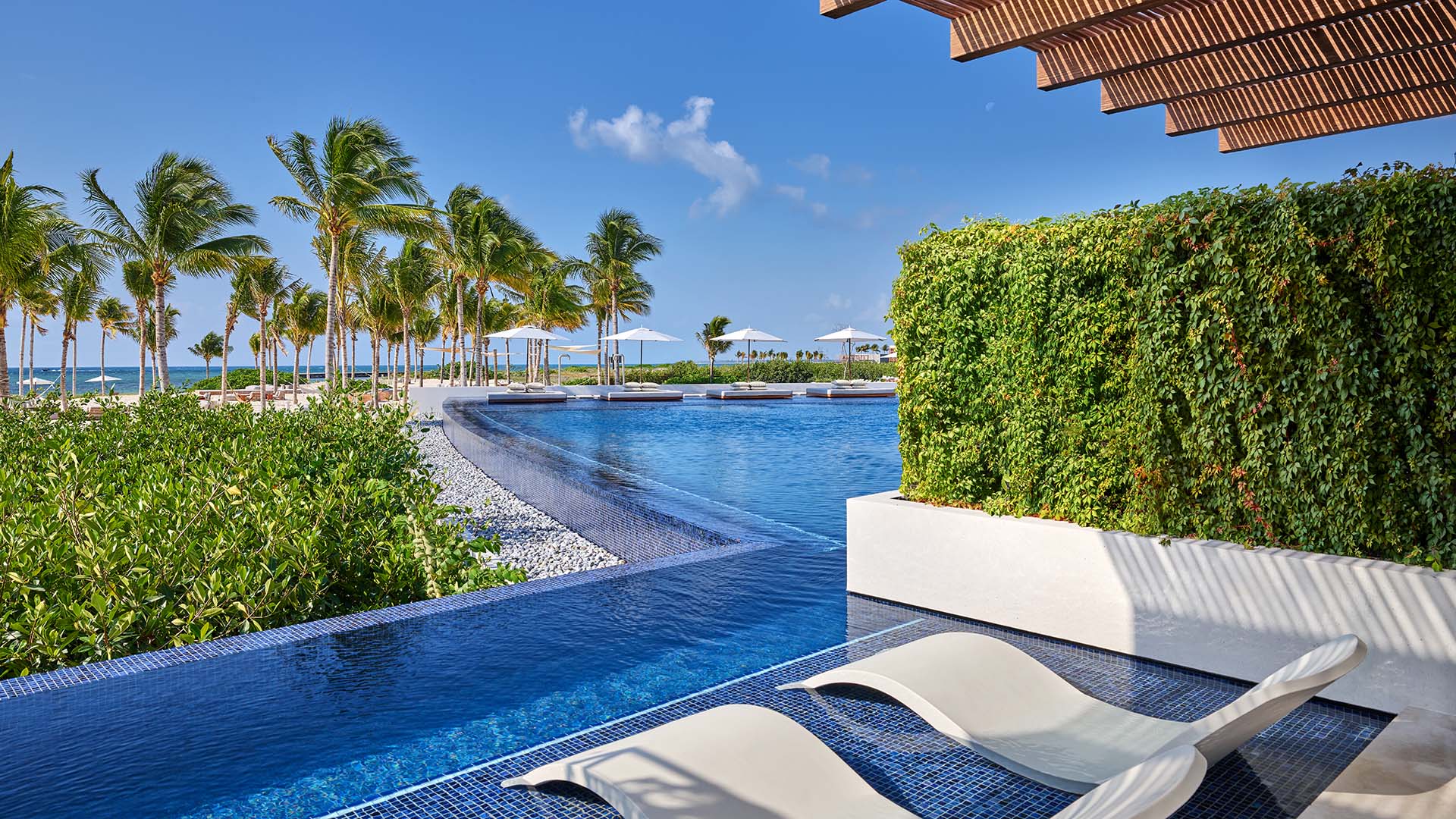
Hamish Kilburn: And you know, whether you’re talking about… The way in which the hotel is immersed in the mangroves, or whether we’re talking about the natural light and the patterns that have been created, how you’ve even created the, the connection with the cenotes, it strikes me that this is a place where the indoors and the outdoors… they’re just seamlessly met and blended.
Tatiana Sheveleva: Yes, it was very important for everybody to create the spaces when you really feel indoor-outdoors; indoors, outdoors, it’s blending together.
We wanted to create this hotel so you would never disconnect from environment.
So that’s why our lobby area is completely open. We do have a roof, but it’s open.
And you enjoy the sound of water, you enjoy the sound of birds and sound of ocean.
And even indoors, reception, for example, it’s looks like it’s a floating platform surrounded by water.
That water feature is almost creating a cascade, which is guiding you the path to the reception desk.
You’re kind of following the sound of the water to come to the check in desk.
Hamish Kilburn: Ooh.
So right away your mind gets set to the zero, if I’m explaining it correctly. Set to the zero, meaning you’re in a resort to relax, celebrate your moments, create the memory stories…
So we thought it would be great to have these opportunities to create indoor-outdoor consciously.
Hamish Kilburn: Hmm.
Tatiana Sheveleva: People will use it.
Hamish Kilburn: And I, I think that’s the key, what you’ve just said: People.
You know, we’re, we’re designing these hotels for, for people.
And would really love to know how your life experience coming from Kazakhstan to Canada, and, and then designing for travelers all over the world…
Tatiana Sheveleva: (Laughs) Yes…
Hamish Kilburn: All of these parts of your story inform the work that you do, surely.
Tatiana Sheveleva: Oh my goodness. Uh, Hamish, I’m from Kazakhstan, uh, from the city Karaganda. Very family oriented culture. And I feel like the Mexico, it’s also very family oriented culture. We like to celebrate as families.
I was always thinking about: When I will have a vacation in this beautiful hotel, how would I like to experience that? What kind of memories I want to build?
Because I never design something beautiful. I always design memories.
I really believe that through my design, people will build the memories there.
‘Cause nobody in the end possibly will remember the chair, how the chair will look like, but they will always will remember when they were sitting on this chair with their daughter, with their husband, and looking in a sunset.
Hamish Kilburn: So true.
Tatiana Sheveleva: That’s what they remember. That’s why I’m doing this job.
You know, sometimes designers get focused on the creativity too much, which is absolutely, it’s the most important element.
Hamish Kilburn: Sure. Of course.
But you have to think about the comfort!
The feeling of that.
Hamish Kilburn: Once you finished and you were in the hotel as a guest, with your own family, what was the biggest visible sign that it actually took seven years to complete?
Tatiana Sheveleva: When I started the project, my son was seven years old. And when we finished the project, my son became 14 years old. So when I come back with my family, he was one of the first guests who arrived.
And my daughter, who wasn’t even born…(laughs)
I was pregnant. I got pregnant during this process, get a birth. (laughs)
So my daughter right now is six years old, and —
Hamish Kilburn: It’s really a milestone.
Tatiana Sheveleva: Yeah, I know! And they came to the room…
And they say, “Wow. Mom! Did you do this?”
I was like, “Yes, I did this. I did this.”
Hamish Kilburn: Awwww.
Tatiana Sheveleva: And he did remember, “Oh yeah, Mom, I remember how beautiful it was. We are going to see cenote again?”
So when, the last day we went to cenote, it was like a perfect conclusion of the project, for sure, and I looked at my son, and he’s standing right now, very tall, proud.
And we took a picture. And we had a picture before and after.
So we had exactly the same picture, where my son was standing, six years old, on that land, and we have, right now, a picture when he was 14 with my daughter, right now. (chuckles)
Hamish Kilburn: That’s so nice. And for me, it’s like, this is what this hotel has been built on. Emotion.
And, and thank you so much for, for coming on the podcast and really sharing that personal account with our listeners; it’s just been such a treat talking to you and hearing the design narrative from your perspective.
I mean, it’s a beautiful hotel, but it’s just so much more spectacular, now that I know so much more about the details that went into it.
So —
MUX Begins — “Overlander” by Steven Gutheinz
Thank you so much, Tatiana. Thank you.
Tatiana Sheveleva: Thank you, Hamish. I really true believe that the people, when they will stay in this hotel, they will feel a love because this hotel was done with a huge love from everybody.
Thank you so much. Thank you.
HAMISH VO: Travel by Design is a podcast by Marriott Bonvoy Traveler, the online travel magazine where you’ll find more inspiring hotel design stories.
If you’re curious about the craft of hotel design, then check out marriottbonvoy.com/travelbydesign.
And if you want to go behind the scenes of my travel experiences across the world, follow me on Instagram — at hotel travel editor.
This episode was produced by Narratively Creative.
Our Senior Producer is James Boo. Our Associate Producers are Nidhi Shastri and Greta Stromquist.
Interview recording by Allie Graham.
Story edits by Priscilla Alabi, sound design by James Boo — and audio engineering by Dorian Love.
Our Marriott Bonvoy Traveler producers are Valerie Conners and Robin Bennefield.
Special thanks to Tatiana Sheveleva for speaking with me about her work.
I’m your host, Hamish Kilburn,
Don’t forget to subscribe to Travel by Design in your podcast app. And tune in next time to hear more design stories behind the world’s most extraordinary hotels.
